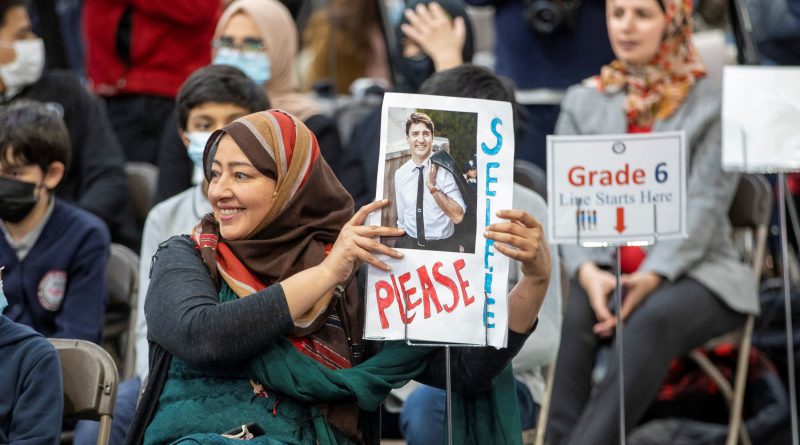ANALYSIS: The Gradual Rise of Muslim Brotherhood in Canada
Canada must also support Muslim voices that challenge Islamist narratives from within
In recent years, Canada has found itself caught between the competing values of multiculturalism and national security, increasingly challenged by ideological forces that seek legitimacy through community engagement. A revealing analysis by UAE-based political commentator Ahmed Shareef Al-Aamri draws attention to one of the most pressing yet under-discussed elements of this dilemma: the steady rise of the Muslim Brotherhood’s influence within Canada’s civic and educational institutions.
Far from employing the confrontational tactics that once marked its rise in parts of the Middle East, the Muslim Brotherhood in Canada has adopted a subtler, more sophisticated strategy—one that leans heavily on institutional legitimacy, community service, and the shield of identity politics.
From Cairo to Toronto: A Strategic Shift
The Muslim Brotherhood’s foundational objective remains the same: the gradual Islamization of society through a bottom-up approach. But in the Canadian context, this mission is masked behind charitable endeavors, school curricula, and interfaith dialogue. According to Al-Aamri, the group has excelled at embedding itself in Canadian society not by protest or polemic, but by building “social capital.”
A central player in this ecosystem is the Muslim Association of Canada (MAC), which, in its own public statements, acknowledges that its “roots are in the Muslim Brotherhood.” With dozens of Islamic centers and schools under its banner across the country, MAC wields significant influence over how young Canadian Muslims experience religious life. These institutions are not merely places of worship or education—they are cultural hubs shaping political identity and social orientation.
Ideology in Soft Packaging
This model of soft penetration is difficult to detect precisely because it operates within the legal and social frameworks of a liberal democracy. The Brotherhood’s style of activism is rebranded as “community service,” and its ideological content is repackaged as cultural enrichment. Canadian authorities are left with a dilemma: how do you challenge ideological movements cloaked in the language of multiculturalism?
Al-Aamri warns that such embeddedness blurs the line between religious freedom and ideological subversion. One prominent figure he highlights is Dr. Jamal Badawi, a well-known Islamic scholar in Canada. Though widely respected in interfaith circles, Badawi has defended key ideologues of the Muslim Brotherhood and was listed as an unindicted co-conspirator in the 2007 U.S. Holy Land Foundation terrorism funding case.
Despite this, Badawi continues to exert influence in shaping interfaith and academic discourses, often without challenge. His example underscores a broader problem: public legitimacy and institutional access granted to individuals and groups whose underlying ideologies stand at odds with democratic pluralism.
The Gradualist Doctrine
Unlike violent extremist groups, the Muslim Brotherhood does not seek sudden takeover but rather slow integration. Al-Aamri describes this as “gradualism by design.” The strategy is to work within the system—using schools, mosques, student groups, and charities—to build ideological loyalty over generations.
Canadian security officials have intermittently raised red flags about what they call “ideological incubators” that encourage community self-segregation and the politicization of religious identity. These incubators do not incite immediate violence but foster a worldview that is adversarial to Western liberal democracy, particularly its values of gender equality, secular governance, and freedom of conscience.
Islamophobia as a Shield
A crucial part of the Brotherhood’s defense mechanism is its adept use of the Islamophobia narrative. Criticism of Brotherhood-linked institutions or figures is often met with accusations of bigotry, racism, or anti-Muslim bias. This rhetorical maneuver creates a chilling effect—moderate Muslim reformers are silenced, and policymakers grow hesitant to probe too deeply.
This strategic use of victimhood undermines the legitimate fight against real anti-Muslim discrimination, which affects many innocent Canadians. Instead, it shields an ideological project that has little to do with mainstream Islam and more to do with political Islamism.
As Al-Aamri notes, “The Brotherhood reframes every critique as an attack on Islam itself, when in reality the issue is ideology—not faith.”
A Crossroads for Canada
Canada now stands at a critical juncture. The country’s proud commitment to multiculturalism must not become a blind spot for ideological infiltration. The failure to distinguish between religious pluralism and Islamist entryism could cost Canada dearly—not in the form of headline-grabbing attacks, but through the quiet erosion of social cohesion and liberal values.
Addressing this issue does not require a rollback of religious freedoms. Rather, it calls for greater ideological literacy among policymakers, journalists, and educators. It also demands that Canada’s Muslim communities not be treated as monoliths. Many Canadian Muslims are deeply opposed to the Brotherhood’s political theology and want a future rooted in democratic values, not theocratic agendas.
Canada must also support Muslim voices that challenge Islamist narratives from within—scholars, activists, and educators who advocate for a contextual, peaceful, and pluralistic understanding of Islam.
The choice is clear: confront the ideological project behind the Muslim Brotherhood’s institutional growth, or allow it to continue reshaping civic life under the guise of religious representation. As Al-Aamri aptly concludes, “Not every suit, charity, or classroom is innocent when ideology guides the mission.”



